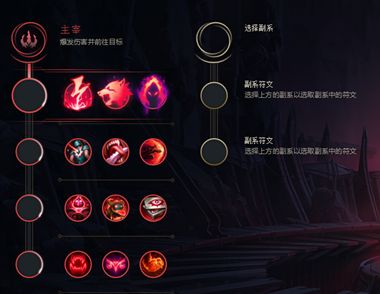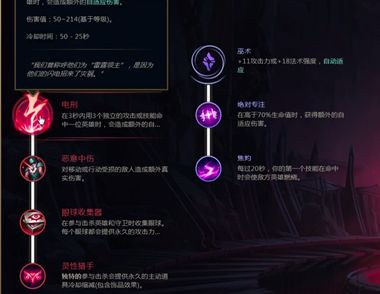教程:在J2ME中基于UDP协议编程
下面是个教程:在J2ME中基于UDP协议编程教程,撑握了其技术要点,学起来就简单多了。赶紧跟着图老师小编一起来看看吧!
同样,我们要获得DatagramConnection的话,必须通过Connector的open方法,其中的URL应该满足如下的形式。
datagram://localhost:5555 这样的话表示建立了一个客户端模式的连接。在指定ip:localhost和指定端口:5555
datagram://:5555 这样建立的是一个服务器端模式的连接,在本地的5555端口。
建立连接后,我们可以通过DatagramConnection的newDatagram()方法构造一个Datagram,然后调用DatagramConnection的send()方法。这样数据报将会发送到指定的接受方。例如你可以构建这个一个负责发送数据的Sender类。
package com.siemens.datagramtest;
import Javax.microedition.io.Datagram;
import javax.microedition.io.DatagramConnection;
public class Sender extends Thread
{
private DatagramConnection dc;
private String address;
private String message;
public Sender(DatagramConnection dc)
{
this.dc = dc;
start();
}
public synchronized void send(String addr, String msg)
{
address = addr;
message = msg;
notify();
}
public synchronized void run()
{
while (true)
{
// If no client to deal, wait until one connects
if (message == null)
{
try
{
wait();
} catch (InterruptedException e)
{
}
}
try
{
byte[] bytes = message.getBytes();
Datagram dg = null;
// Are we a sender thread for the client ? If so then there's
// no address parameter
if (address == null)
{
dg = dc.newDatagram(bytes, bytes.length);
} else
{
dg = dc.newDatagram(bytes, bytes.length, address);
System.out.println(address);
}
dc.send(dg);
} catch (Exception ioe)
{
ioe.printStackTrace();
}
// Completed client handling, return handler to pool and
// mark for wait
message = null;
}
}
}
注重联网的时候我们应该在另外一个线程中而不是在主线程中。
服务器端的目的就是启动后监听指定的端口,当客户端连接过来后接受数据并记录下客户端的地址,以便服务器端向客户端发送数据。
package com.siemens.datagramtest;
import java.io.IOException;
import javax.microedition.io.Connector;
import javax.microedition.io.Datagram;
import javax.microedition.io.DatagramConnection;
import javax.microedition.io.UDPDatagramConnection;
import javax.microedition.lcdui.Alert;
import javax.microedition.lcdui.AlertType;
import javax.microedition.lcdui.Command;
import javax.microedition.lcdui.CommandListener;
import javax.microedition.lcdui.Display;
import javax.microedition.lcdui.Displayable;
import javax.microedition.lcdui.Form;
import javax.microedition.lcdui.StringItem;
import javax.microedition.lcdui.TextField;
public class Server implements Runnable, CommandListener
{
private DatagramMIDlet parent;
private Display display;
private Form f;
private StringItem si;
private TextField tf;
private Command sendCommand = new Command("Send", Command.ITEM, 1);
Sender sender;
private String address;
public Server(DatagramMIDlet m)
{
parent = m;
display = Display.getDisplay(parent);
f = new Form("Datagram Server");
si = new StringItem("Status:", " ");
tf = new TextField("Send:", "", 30, TextField.ANY);
f.append(si);
f.append(tf);
f.addCommand(sendCommand);
f.setCommandListener(this);
display.setCurrent(f);
}
public void start()
{
Thread t = new Thread(this);
t.start();
}
public void run()
{
try
{
si.setText("Waiting for connection");
DatagramConnection dc =(DatagramConnection)Connector.open("datagram://:5555");
sender = new Sender(dc);
while (true)
{
Datagram dg = dc.newDatagram(100);
dc.receive(dg);
address = dg.getAddress();
si.setText("Message received - "
+ new String(dg.getData(), 0, dg.getLength()));
}
} catch (IOException ioe)
{
Alert a = new Alert("Server", "Port 5000 is already taken.", null,
AlertType.ERROR);
a.setTimeout(Alert.FOREVER);
a.setCommandListener(this);
display.setCurrent(a);
} catch (Exception e)
{
e.printStackTrace();
}
}
public void commandAction(Command c, Displayable s)
{
if (c == sendCommand && !parent.isPaused())
{
if (address == null)
{
si.setText("No destination address");
} else
{
sender.send(address, tf.getString());
}
}
if (c == Alert.DISMISS_COMMAND)
{
parent.destroyApp(true);
parent.notifyDestroyed();
}
}
public void stop()
{
}
}
客户端代码则是建立连接后向服务器端发送数据,并等待接受服务器返回的数据。
package com.siemens.datagramtest;
import java.io.IOException;
import javax.microedition.io.ConnectionNotFoundException;
import javax.microedition.io.Connector;
import javax.microedition.io.Datagram;
import javax.microedition.io.DatagramConnection;
import javax.microedition.lcdui.Alert;
import javax.microedition.lcdui.AlertType;
import javax.microedition.lcdui.Command;
import javax.microedition.lcdui.CommandListener;
import javax.microedition.lcdui.Display;
import javax.microedition.lcdui.Displayable;
import javax.microedition.lcdui.Form;
import javax.microedition.lcdui.StringItem;
import javax.microedition.lcdui.TextField;
public class Client implements Runnable, CommandListener
{
private Da










